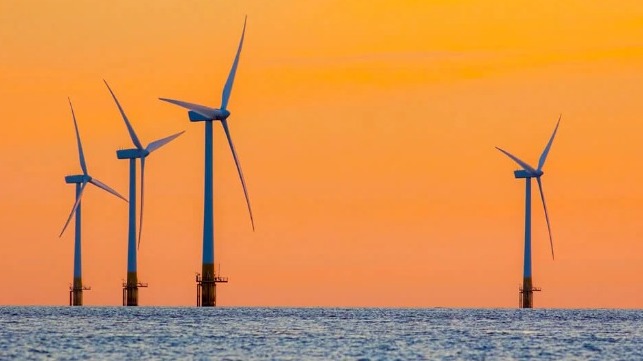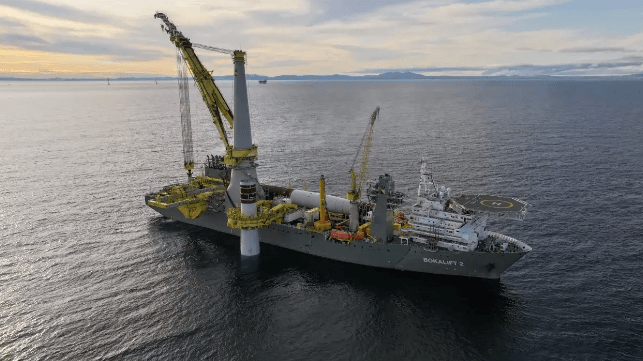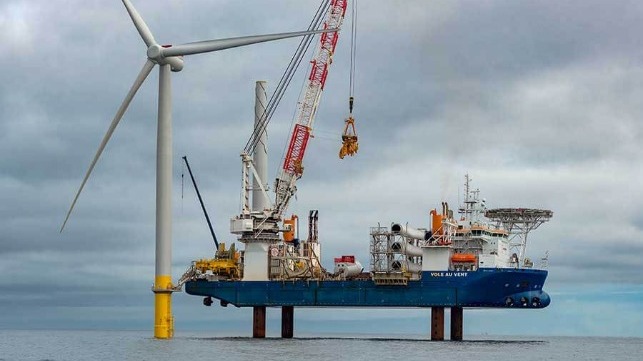Korean Ministry Thinks $10 Trillion Asset Manager Can't Afford Wind Farms

South Korea's energy regulator has determined that a subsidiary of BlackRock - the world's largest asset manager - has not demonstrated financial capacity to build a two-gigawatt offshore wind complex on the nation's southern coastline.
As of January, BlackRock has about $10 trillion in assets under management worldwide, more than the combined assets of the American insurance sector. Subsidiary Blackrock Real Assets owns Korea Renewable Energy Development & Operation Holdings (KREDO), the parent company of South Korean developer KREDO Offshore. KREDO Offshore applied for a business license to install 200 wind turbines off the coast of four islands in Sinan, a high-potential region for wind power generation. The license application divided the two-gigawatt project up into five separate wind farms; taken together, the complex would be the largest in South Korea when completed. The cost would be substantial: $7.5 billion, not including long-distance transmission infrastructure.
According to South Korean media, the Ministry of Trade, Industry and Energy has rejected all five of the Sinan projects.
The first issue that the ministry identified with Kredo Offshore's proposal was a "lack of documents to prove financial ability for the potential project," according to the Korea Herald - even though the parent company manages assets worth more than five times the annual economic turnover of South Korea.
The second issue was a lack of grid capacity to handle another two gigawatts of power. Sinan is a rural area and does not have the transmission infrastructure to absorb that much electricity, according to the ministry. The government has plans to develop a long-distance DC subsea transmission line to connect renewables projects in Sinan with power-hungry markets in Seoul - but not for another 12 years. According to the ministry, only one of the five Kredo projects would be able to supply its power to the local grid.
Amazon Buys Half of an Offshore Wind Farm's Power

Most offshore wind farms sell their electricity to a utility. Others are owned by a utility and provide the power to their own grid. A small number find a different way to market by selling some of the power to a really big consumer. An EDP/Engie joint venture off Scotland has succeeded in just that, and in a high-tech fashion: in two separate deals, the Moray West project has sold more than half its output to Google and Amazon.
In a contract announced Tuesday, Amazon has agreed to buy more than 470 MW of generating capacity from Engie, accounting for more than half of Moray West's 880 MW capacity. The deal will support Amazon's goal to run all its operations on renewable power by 2025.
"Projects like Moray West will play a critical role in decarbonizing Amazon’s operations and the UK grid, with this agreement demonstrating Amazon’s commitment to this ambition," said Amazon's director of energy for EMEA, Lindsay McQuade.
Amazon is the biggest corporate buyer of renewable power in the UK, the EU, and the world, and it added about one gigawatt worth of capacity to its portfolio in the region in 2023. The newly-announced agreement represents half of last year's total.
The other big customer for Moray West is Amazon's competitor Google. The California tech giant has agreed to buy 100 GW worth of the wind farm's capacity. After the project comes online, Google's UK operations will run on 90 percent renewable power.
“People across the UK and Europe are increasingly worried about climate change and energy security. We share that concern and believe technology is an important part of the solution - both by reducing our own emissions, and by helping others to reduce their own,” said Matt Brittin, President of Google EMEA, in a statement at the time.
Dominion Energy Gets Federal Approvals for Largest US Offshore Wind Farm

Dominion Energy received the last two major federal approvals needed to begin construction of its 2.6-gigawatt Coastal Virginia Offshore Wind (CVOW) to be located offshore near Virginia Beach. The largest offshore wind farm so far in the United States, it will now move into construction and is expected to be completed by late 2026.
The Bureau of Ocean Energy Management (BOEM) provided its final approval of CVOW's Construction and Operations Plan (COP), which authorizes construction offshore. The U.S. Army Corps of Engineers also issued its permit to allow for permitted impacts to U.S. waters, including the route of the electric transmission line that will connect the clean, renewable energy generated offshore to the electric grid onshore.
"Virginia is leading the way for offshore wind as we near the start of offshore construction for Coastal Virginia Offshore Wind," said Bob Blue, Dominion Energy's chair, president, and chief executive officer. "These regulatory approvals keep CVOW on time and on budget as we focus on our mission of providing customers with reliable, affordable, and increasingly clean energy."
CVOW will consist of 176 turbines and three offshore substations in a nearly 113,000-acre lease area off the coast of Virginia Beach. As a regulated utility, Dominion Energy has not faced the same financial challenges as commercial developers. CVOW is proceeding while Ørsted for example has canceled a larger two-phase project planned for the New Jersey coastline and another project in Maryland. Other commercial developers have also sidelined projects in New York State and Massachusetts as they look to rebid their power purchase agreements to reflect the impact of inflation, rising interest rates, and supply chain challenges.
"In an important step forward, we are thrilled to see the Coastal Virginia Offshore Wind project receive two major approvals that will place the nation's largest offshore wind farm right off the coast of Virginia," Senator Mark Warner, Senator Tim Kaine, and Representative Bobby Scott said in a joint statement.
Some onshore construction activities began in Virginia in November 2023 following BOEM's favorable Record of Decision for CVOW. The company reports that construction will quickly ramp up with these last approvals. In addition, initial offshore construction activities related to the export cable and the monopile foundation installation are expected to begin in the second quarter of this year.
Staging for the eventual construction of the wind farm began last October with the arrival of the first monopiles at the Portsmouth Marine Terminal. DEME has been contracted for the installation of the monopolies when the project reaches that stage.
Dominion Energy in 2020 completed the installation of two 12 ME turbines as a pilot project 27 miles off Virginia Beach. They were the first commercial wind turbines installed in U.S. federal waters.
No comments:
Post a Comment